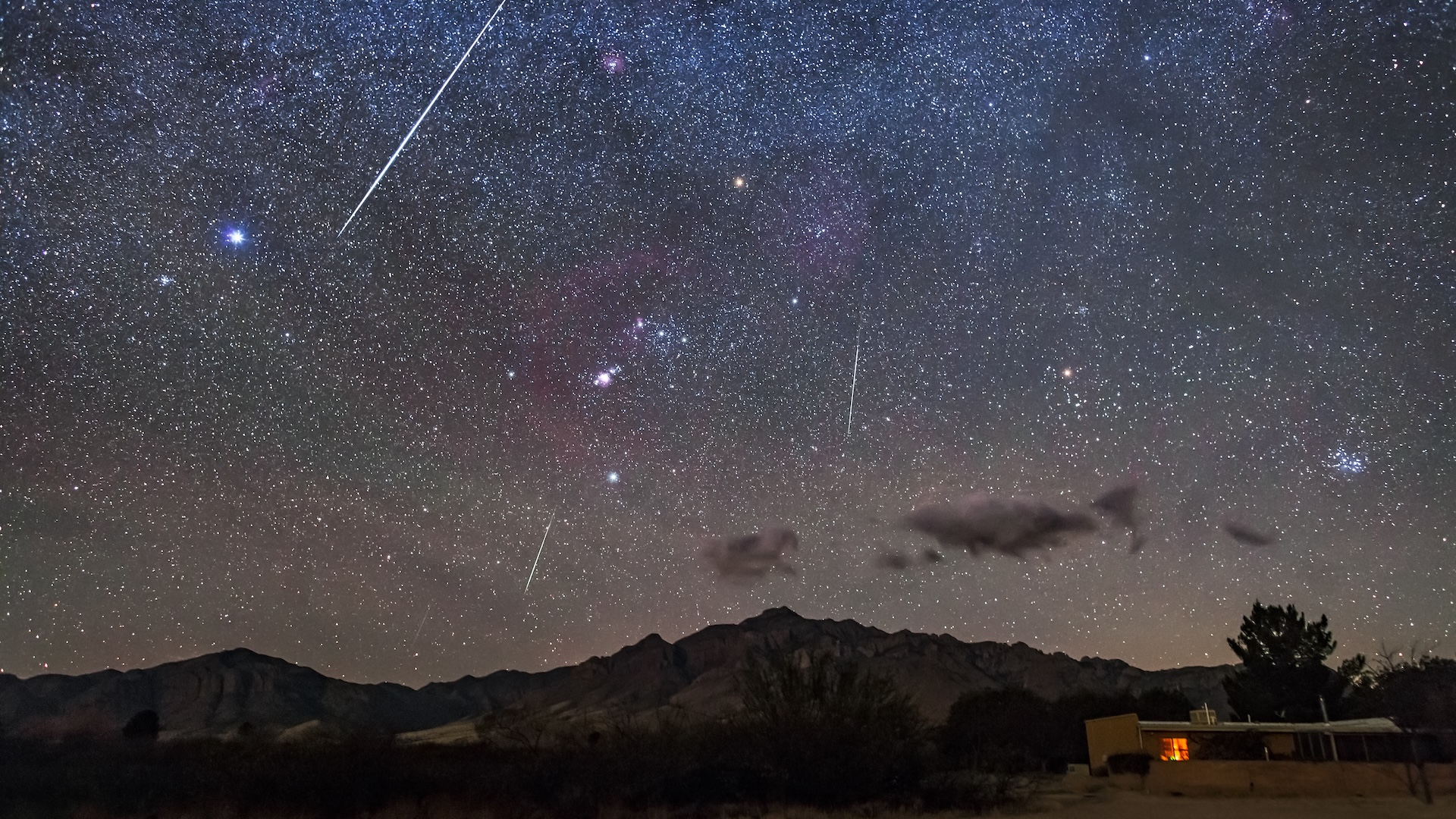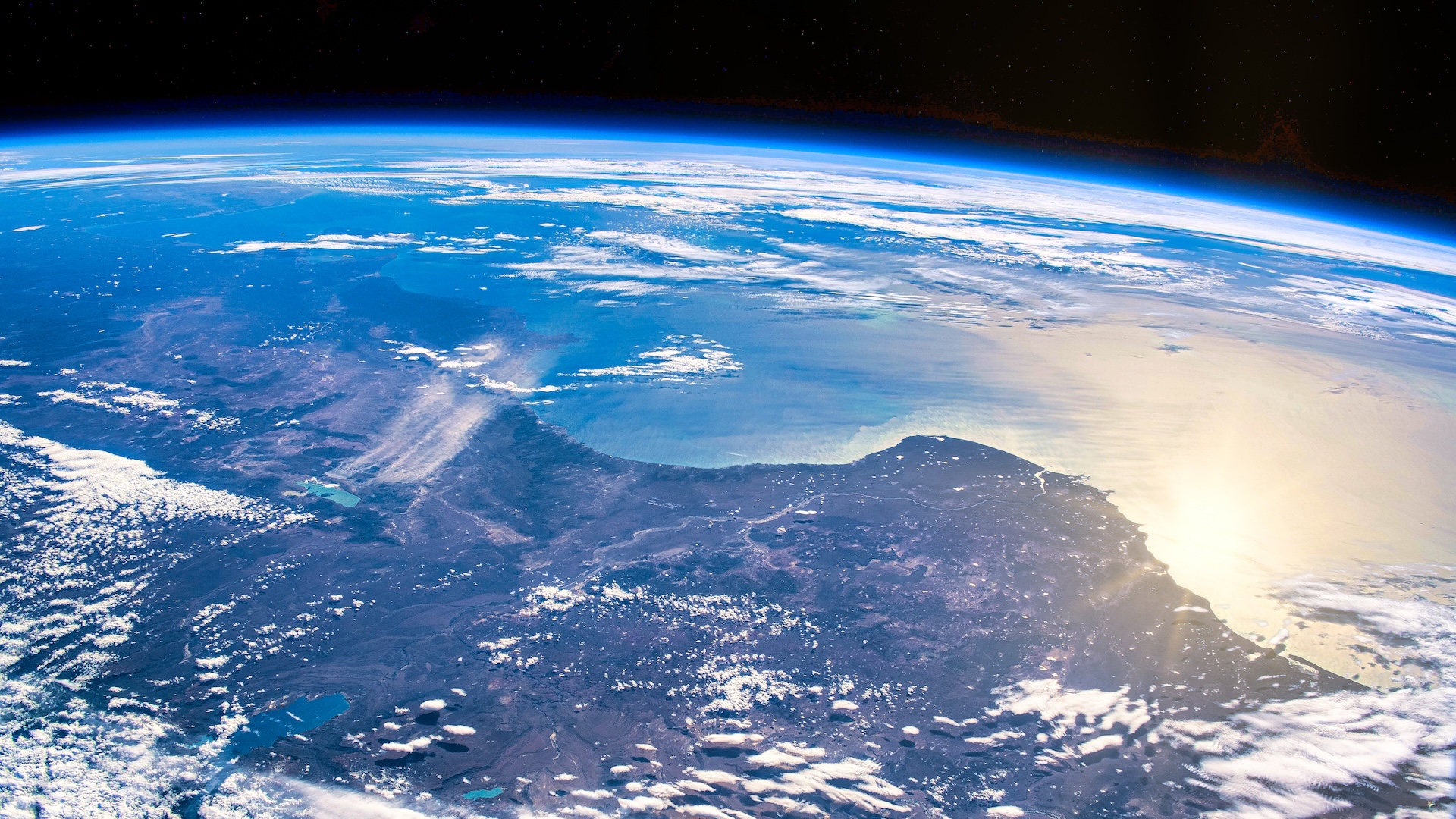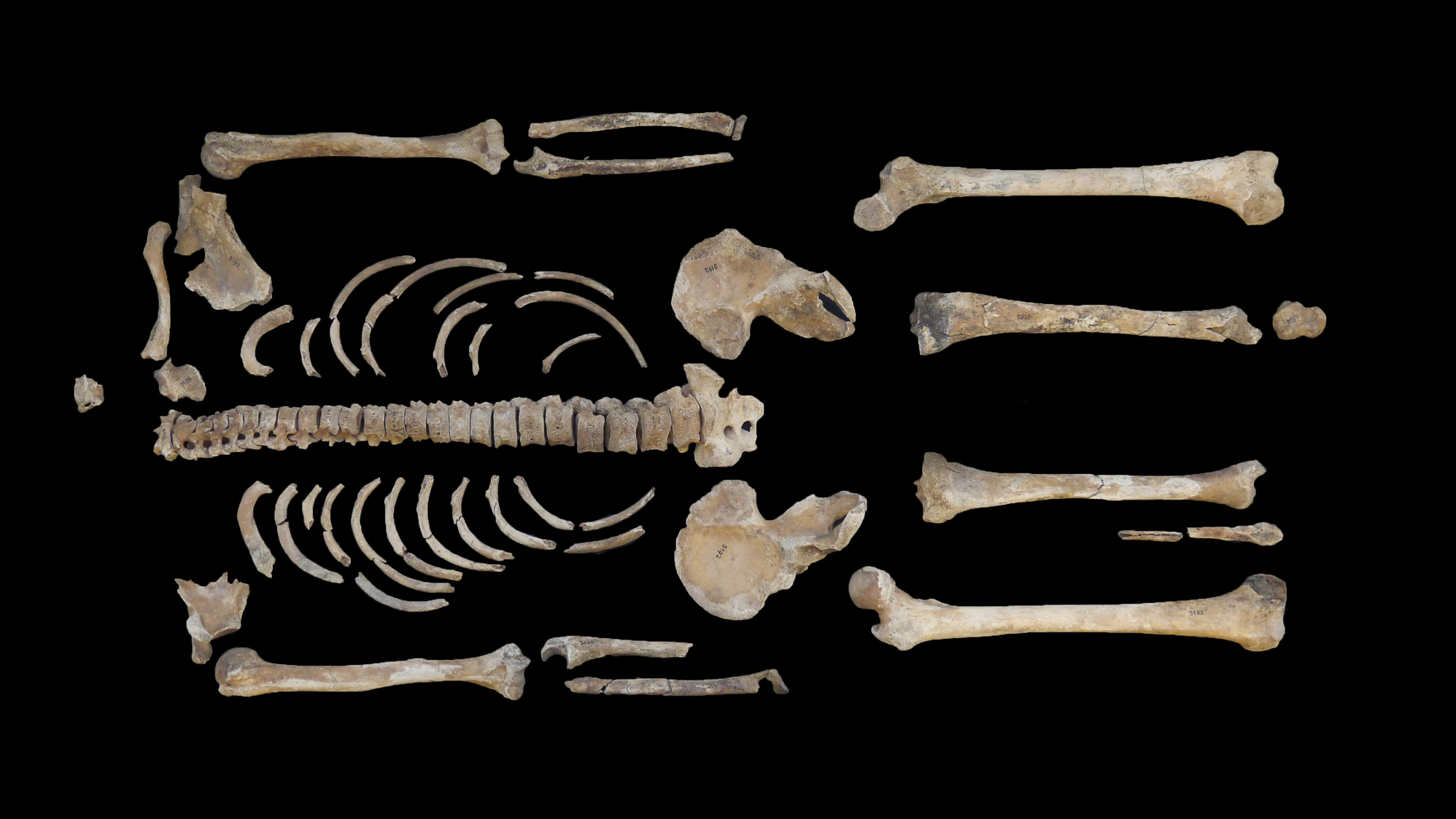NASA's Total Solar Eclipse Maps Show Best Viewing Spots (Photos)
Kentucky
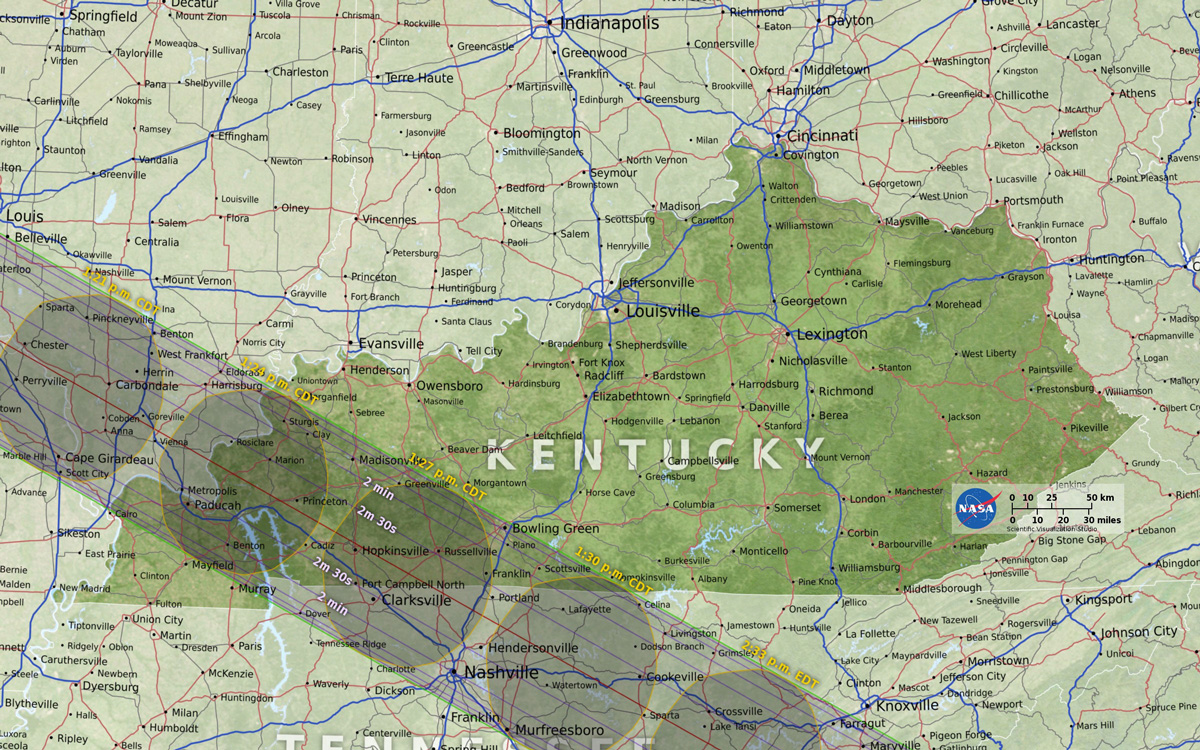
Southwestern Kentucky will get the best show in the state, with these cities located in the path of totality: Adairville, Fredonia, Hopkinsville, Princeton, Dycusburg, Eddyville, Elkton and Salem.
Tennessee
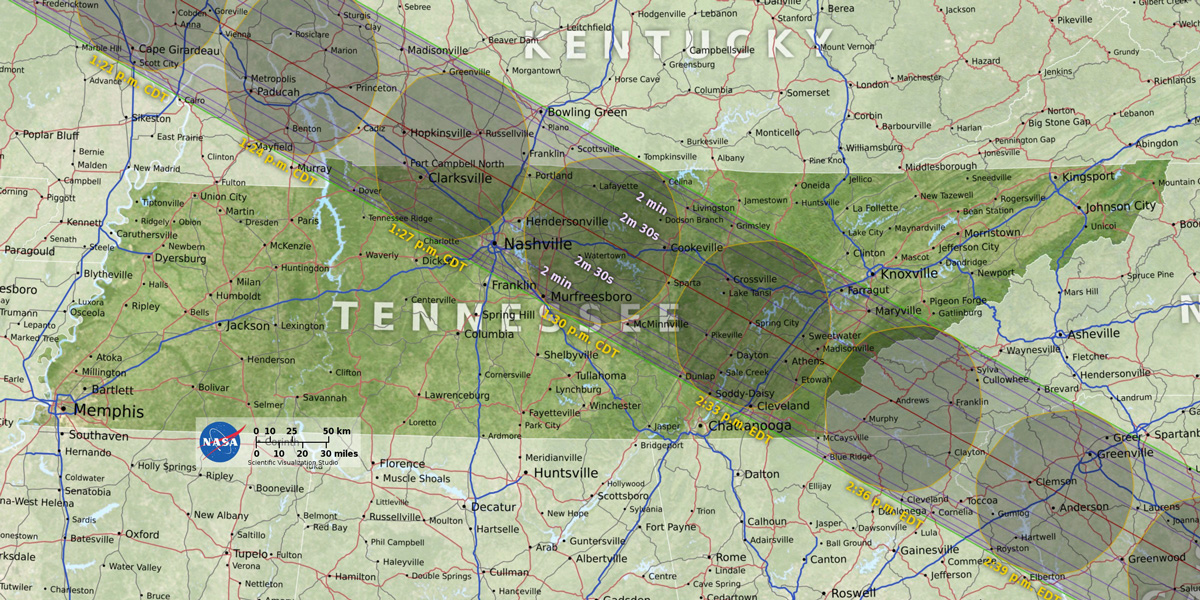
If you live in the music capital of the world, there's a chance you'll get an amazing celestial show. Since Nashville is right on the southern edge of the totality path, you'll need to go to the northernmost part of the city to see totality. And according to advice from Eclipse2017.org, trek 40 to 60 miles north to get a better view.
Georgia
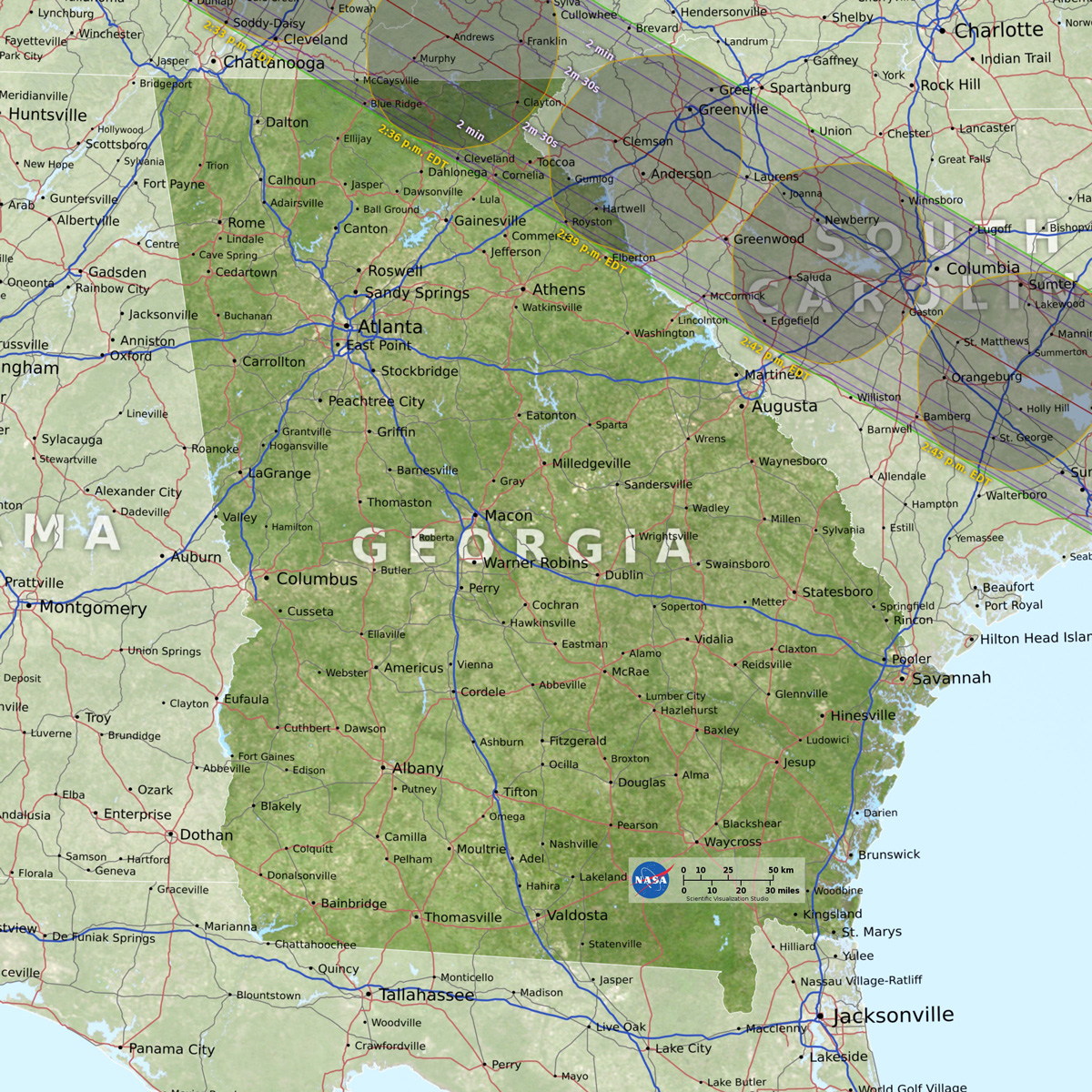
Most places in Georgia will be south of the path of totality, though Dillard and Sky Valley should see a complete eclipsing of the sun.
North Carolina
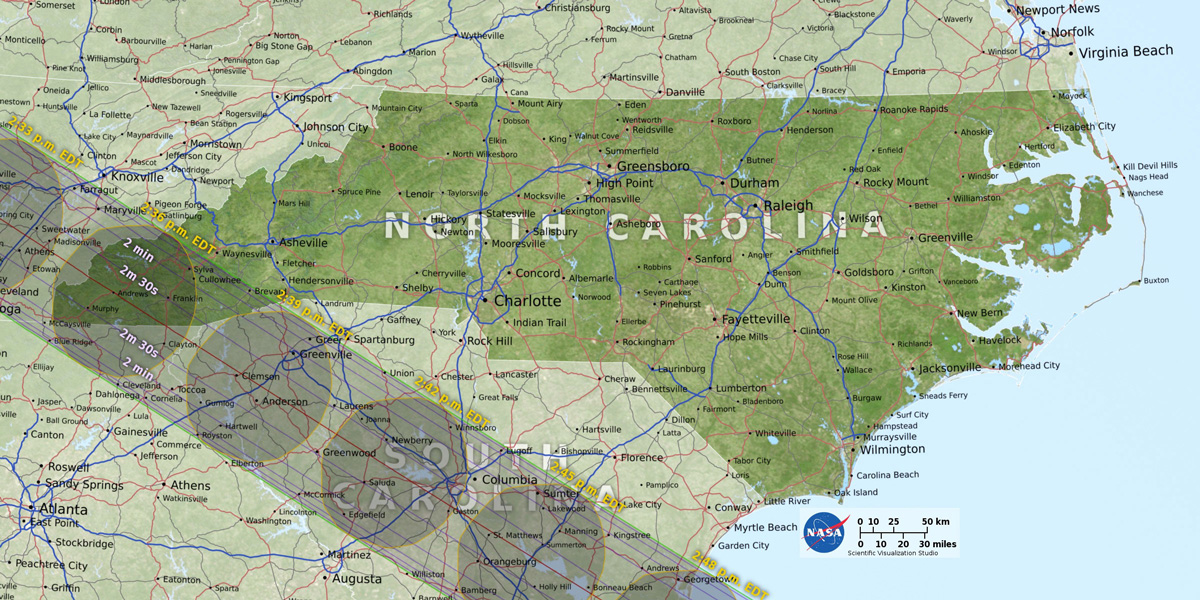
Only the southwestern tip of the state of North Carolina will be located in the path of totality.While Andrews will see the total eclipse, a few other cities are right on the northern edge of this path of totality, meaning you should head to the southern part of the city to see totality. And according to Eclipse2017.org, better yet, travel 40 to 60 miles south to get an even better view.
South Carolina

In South Carolina, you may be able to sit on the beach and watch the eclipse, at least if you're near a city located in the path of totality: Charleston is close to the southern edge of the path, so if you head 30-50 miles (50 to 80 kilometers) north, you'll see even more of the show, according to Eclipse2017.org. Beach spots between Charleston and Georgetown should be right inside the path, with the peak of the eclipse occurring around 2:48 p.m. CDT on the coast.
Sign up for the Live Science daily newsletter now
Get the world’s most fascinating discoveries delivered straight to your inbox.
Jeanna Bryner is managing editor of Scientific American. Previously she was editor in chief of Live Science and, prior to that, an editor at Scholastic's Science World magazine. Bryner has an English degree from Salisbury University, a master's degree in biogeochemistry and environmental sciences from the University of Maryland and a graduate science journalism degree from New York University. She has worked as a biologist in Florida, where she monitored wetlands and did field surveys for endangered species, including the gorgeous Florida Scrub Jay. She also received an ocean sciences journalism fellowship from the Woods Hole Oceanographic Institution. She is a firm believer that science is for everyone and that just about everything can be viewed through the lens of science.
